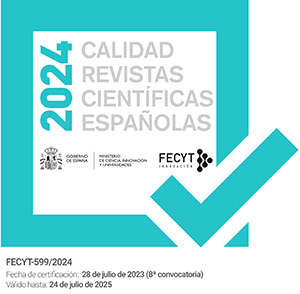Putting Value of the Nazis Extermination and Concentration Camps as a Place of Memory
DOI:
https://doi.org/10.5944/etfvi.14.2021.29251Keywords:
Geography of Memory; Cultural Heritage; Landscape; Dark Tourism; Auschwitz-Birkenau; Mauthausen; Dachau; SachsenhausenAbstract
The Nazis concentration camps were one more piece of a stage of the restrictive German society in rights and freedoms. Convinced of obtaining perfect citizenship, these enclosures were opened to the isolation of the national population contrary to the ideals of the government, which led to a practice of extermination at the international level. The end of the war made it possible to show its horrors to the world and began a long journey towards its enhancement, now converted as representative places of memory with a great territorial impact.
Downloads
References
Applebaum, A. (2004). Gulag. Historia de los campos de concentración soviéticos. Debate.
Ashworth, G.J. & Isaac, R.K. (2015). Have we illuminated the dark? Shifting perspective on dark tourism [¿Hemos iluminado la oscuridad? Cambio de perspectiva sobre el turismo oscuro]. Tourism Recreation Research, 40 (3), 316-325. https://doi.org/10.1080/02508281.2015.1075726
Casa de la Conferencia de Wannsee. Memorial y Centro Educativo (2018). La Conferencia de Wannsee y el Genocidio de los Judíos Europeos.
Fortuna, C. (2012). Património, turismo e emoção [Patrimonio, turismo y emoción]. Revista Crítica de Ciências Sociais, 97, 23-40. https://doi.org/10.4000/rccs.4898
Gil Pecharromán, J. (2011). Historia de la integración europea. Universidad Nacional de Educación a Distancia.
Goldhagen, D. J. (1997). Los verdugos voluntarios de Hitler. Los alemanes corrientes y el Holocausto. Santillana Ediciones Generales, S.L.
Hodgkinson, S. (2013). The concentration camp as a site of «dark tourism» [El campo de concentración como lugar del «turismo oscuro»]. Témoigner. Entre histoire et mémoire, 116, 22-32. https://doi.org/10.4000/temoigner.272.
Kershaw, I. (1998). Hitler. 1889-1936. Ediciones Península.
Kershaw, I. (2000). Hitler. 1936-1945. Ediciones Península.
Levi, P. (2001). Si esto es un hombre. Editorial Barcelona: Muchnik.
Levi, P. (2009). Vivir para contar. Escribir tras Auschwitz. Editorial Alpha Decay.
Memorial de la Resistencia Alemana. Resistencia contra el nacionalsocialismo. Visión general de la exposición permanente.
Novick, P. (2007). Judíos: ¿vergüenza o victimismo? Marcial Pons.
Peña Freire, A. (2018). Legalidad y orden jurídico. El debate sobre la legalidad del exterminio nazi. Atelier libros jurídicos.
Rees, L. (2005). Auschwitz. Los nazis y la «Solución Final». En colaboración con Editorial Planeta, S.A.
Sánchez Tortosa, J.; Palmero, F.; Fernández Vítores, R. & Mira Almodóvar, A. (2019). Los lugares del Holocausto. Confluencias Editorial.
Sharpley, R. & Stone, P. (2009). The Darker Side of Travel. The Theroy and Practice of Dark Tourism [El lado más oscuro de los viajes. La teoría y la práctica del turismo oscuro]. Bristol Channel View.
Stone, P. & Sharpley, R. (2008). Consuming Dark Tourism: A Thanatological Perspective [Consumir turismo oscuro: Una perspectiva tanatológica]. Annals of Tourism Research, 35, 2, 574-595. https://doi.org/10.1016/j.annals.2008.02.003
Zárate Martín, M.A. & Rubio Benito, M.T. (2005). Geografía Humana: Sociedad, economía y territorio. Editorial Centro de Estudios Ramón Areces, S.A.
Downloads
Published
How to Cite
Issue
Section
License
Copyright (c) 2021 José Ramón Sánchez Holgado

This work is licensed under a Creative Commons Attribution-NonCommercial 4.0 International License.
Authors who publish in this journal agree to the following terms:
- Authors retain copyright and grant the journal right of the first publication with the work simultaneously licensed under a license Creative Commons Reconocimiento-NoComercial 4.0 Internacional that allows others to share the work with an acknowledgement of the work's authorship and initial publication in this journal.

- Authors are able to enter into separate, additional contractual arrangements for the non-exclusive distribution of the journal's published version of the work (e.g., post it to an institutional repository or publish it in a book), with an acknowledgement of its initial publication in this journal.
- Authors are permitted and encouraged to post their work online (e.g., in institutional repositories or on their website) prior to and during the submission process, as it can lead to productive exchanges, as well as to earlier and greater citation of the published work (See The Effect of Open Access).







